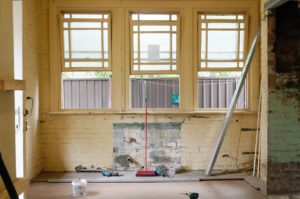Interior Design Tips – Renovating your Home

Renovating your house can completely refresh the look, functionality and feel of your home. Whether you’re looking to practice your DIY or hire a professional interior designer, these tips and tricks will get your creative juices flowing.
When starting your journey, it’s important to have an idea or a theme for the style you are hoping to replicate or design. Having a picture, however loose, of what the end product should look like will help ensure your rooms match one another and that you don’t end up disappointed with the outcome. You can find this kind of inspiration in a number of places such as Pinterest or magazines. For example, browsing through a search of residential interior design will provide you with a broad variety of styles in order to pin point what best suits your tastes.
Once you have a theme in mind, your next step will be to work out a realistic budget. This is exceptionally important to outline in order to ensure the project can be completed and that unplanned debt is avoided. When choosing a budget, it is wise to break this down, room by room, or project by project, as some will require more money than others. This way, when you are getting quotes for your timber feature wall, or whatever it may be, you will be able to accurately measure whether it will fit into your budget.
If you’re someone who struggles with pre-planning or budgeting, it may help if you make a ‘dream board’. This is a physical break down of your ideas. Get a big cork board and mount it on the wall or clear a large space on a table or the floor. From here you can print out pictures or cut outs from magazines and arrange them physically. You might also want to provide yourself with a number of choices. For instance, you might collect some scraps or samples to give you a tangible idea of the timber colours you will choose from. You can also get some sticky notes to write ideas and details, or to jot down quotes from vendors.
When buying any furniture pieces for your home, you should ensure that it matches or fits with the existing items that you own. Or, perhaps you could look into renovating the existing furniture to match your new ideas. For instance, if you have a coastal interior design style planned, you may want to purchase coastal beach furniture to complete the look. You may also have items around the house that could match the new vibe with a different paint or alteration. It is important to make sure you accurately measure any furniture you plan to keep in your final design. This is to ensure that any changes in room shape or size will not be negatively impacted. Drawing up a plan that is to scale will help ensure that your furniture plans can be executed once any building changes are complete.

A big part of any building renovations is ensuring you are particularly careful about any electric wires and plumbing inside your house. Regardless of your DIY plans, unless you are a qualified or highly skilled electrician or plumber, it is highly recommended you hire a professional. This may only be to help you plan any works that you will do and to ensure the ideas you have won’t cause any issues down the line. Many DIYers have fallen into the trap of trying to save some cash by simply watching some YouTube videos or reading some pages on the web, only to end up forking out the big bucks to have a professional clean up their mess.
When renovating your house, it is important to consider the lighting. We’re talking both the natural kind and the artificial. The location of the windows doesn’t just impact wall space for any furniture, it will also impact the amount of light in a room. If you fill a room with furniture that has little natural light, you will end up making it seem smaller and crowded. Lamps are a designer’s best friend when it comes to mood or vibe setting. The placing of a free-standing lamp for the evenings can easily create an ambient mood that provides a relief from a harsh, overhead light. Lamps also provide the opportunity to compliment your theme with the base and style of shade.
When getting started, you should make a timeline and list of what you will do. If you try to do every room at once, you’ll find yourself feeling like you live in a perpetual construction site and probably find it will take longer for you to complete. It is also important to be strategic with the order that you choose. Starting with the area you spend the most time in (often the living room) will ensure that it is done perfectly and before any potential changes to your budget. Starting with your most occupied room is also beneficial to help you feel less displaced while your renovations are in action – full renovations can take years to complete.
Whatever you do, don’t underestimate the psychological stress a renovation is likely to bring on. It may all seem rosy and exciting in the beginning, and no doubt the end project will be worth it, but it is very rare that plans will go accordingly. Be realistic with your expectations for trouble. Be ready to get flexible with your budget. If you are renovating with a partner, be prepared to disagree along the way. Be sure to have open communication and really understand what the other is expecting the outcome to be before you start making any changes. If you are hiring contractors or any other professional, have meetings with several and be sure to pick one that fits. Be sure they have a clear understanding of your expectations – it won’t hurt if you can find someone who is passionate about your ideas.
Designing for renovation is no doubt a laborious task, expensive endeavour and a taxing experience. However, when everything is done, when the contractors clear out and it’s just you in your home, you’re sure to feel that it has all been worth it.




